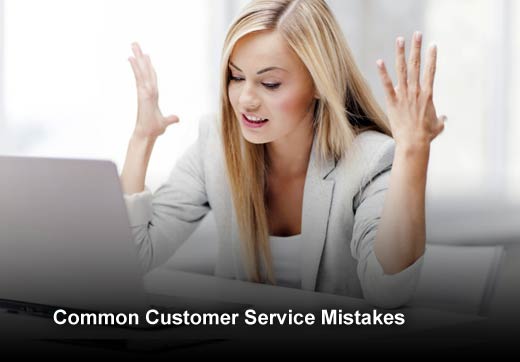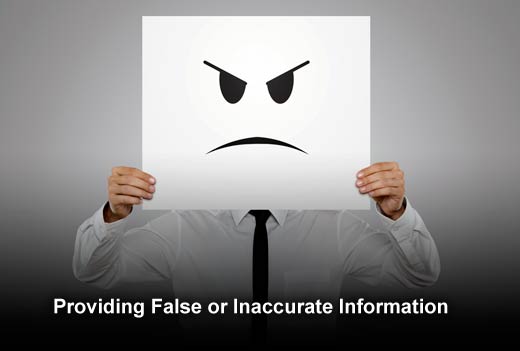No matter the industry, excellent customer service is a vital part of any successful business. Research shows 76 percent of Americans believe customer service is the best indicator of how much a company values their business. Fifty-five percent of people have stopped using a service due to poor service interactions.
Yet, customer service snafus continue to plague businesses. Starbucks served up the latest example of a company forced to apologize for poor customer service after an employee blew her lid.
There is no perfect formula for creating superior customer service, given the many variables involved, but there are a few common mistakes businesses should recognize and avoid.
With this in mind, CALLPROMISE co-founder Mike Oristian provides a list of five common mistakes and solutions that customer service managers would be wise to consider.
Common Customer Service Mistakes
Click through for five common customer service pain points and suggestions for how to best deal with them, as identified by CALLPROMISE co-founder Mike Oristian.
Providing False or Inaccurate Information
When a customer calls customer service, they’re looking for expert advice. Nothing’s worse than an agent who doesn’t know how to handle a specific question properly. Even worse is an agent who tries to compensate for their lack of knowhow by providing incorrect information. When an agent leaves a customer with inaccurate expectations, they’re creating additional problems that will only heighten the customer’s dissatisfaction and can tamper with the brand’s reputation.
Solution: Create a service culture where agents feel comfortable and supported in taking the time to find the correct solution, if one isn’t top of mind. Additionally, representatives need to feel as though they can offer the assistance of someone who is more knowledgeable about a specific question and transfer the call to a supervisor.
Being Impolite to Customers
Look no further than Comcast to find an example, or two, or three, of how not to treat customers. No matter the situation, directing rudeness toward customers is never the solution. It’s a one-way ticket to losing a loyal customer and possible brand advocate.
Solution: Be selective in staffing your service center. Easier said than done, but this is one example of when patience is a virtue. Hire agents for the traits – such as bearing and tact – that make them appropriate for customer-facing work, in addition to whatever specific industry skills they need to competently and confidently handle customer inquiries.
Having Disconnected or Hard to Navigate Channels
Forrester data shows that 55 percent of U.S. adults are likely to abandon their online purchase if they can’t find a quick solution. Some businesses try to distance themselves from customers while others just fail to connect. The IRS literally failed to connect with callers this past tax season. Both situations provide customers with a reason to turn to the competition.
Solution: Provide customers with the ability to contact customer service via a variety of channels. Customers should be able to pick up where they left off on one channel and continue the conversation on another. For example, while online forums are becoming the status quo, not all business has abandoned the traditional 1-800 numbers. Not to mention, customer service contact information needs to be readily accessible and easy to find.
Not Listening and Forcing Customers to Repeat Themselves
Forrester has found that customers “want to be able to start a conversation on one touchpoint or channel and continue it on another without having to repeat themselves.” After experiencing customer backlash due to poor customer service, mobile payment company Square created more avenues for customers to engage the company, such as social accounts and online forums.
Solution: Remember that knowledge is power. If you collect a customer’s information in a click-to-call widget, automated system or on a website, ensure that information is known and available to the agent ahead of the conversation so the customer isn’t forced to repeat himself.
Forcing Customers to Wait on Hold
Research shows that a one-minute hold time is all it takes for a customer to hang up and abandon their customer service request. Consumers’ lives are too busy to be placed on hold and they expect immediate results. Unfortunately, many businesses still haven’t grasped the concept and force customers to endure long wait times while being told their business is valued.
Solution: Adopt a “callback first” approach to customer service, where callers can hang up and receive a callback when an agent is available, instead of waiting on the line. Statistics show that 81 percent of consumers are most satisfied when speaking to a live agent and 63 percent prefer a callback option. Callback is an inexpensive and effective alternative, improving productivity and cost-savings for companies, while building on the customer service experience.








